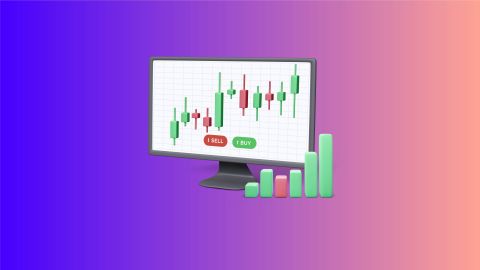Futures are derivative financial contracts that obligate parties to buy or sell an asset at a predetermined future date and price. The underlying assets can be physical commodities or financial instruments. Futures contracts detail the quantity of the underlying asset and are standardised to facilitate trading on a futures exchange.
For example, a futures contract allows an investor to take a chance on the price of a financial instrument or commodity. Futures are used to hedge the price movement of an underlying asset to help prevent losses from unfavourable price changes. When you engage in hedging, you take a position opposite to the one you hold with the underlying asset; if you lose money on the underlying asset, the money you make on the futures contract can mitigate that loss.
Definition of a futures contract
In the context of the Indian securities market, a futures contract is a standardised financial agreement between two parties to buy or sell a specified quantity of an underlying asset at a predetermined price on a future date. These contracts play a pivotal role in risk management, price discovery, and providing liquidity in the financial markets. A futures contract is a standardised agreement that allows investors to benefit from the future price movements of various financial instruments. These contracts contribute to market efficiency, risk management, and price discovery, making them integral components of the broader landscape. Traders and investors engage in futures contracts with the aim of hedging against price volatility, leveraging market movements, and diversifying their portfolios.
Key elements of a futures contract include
- Underlying assets:
The futures contract is based on a wide range of underlying assets. These can include equity indices, individual stocks, commodities, interest rates, and currency pairs. The choice of the underlying asset depends on the type of futures contract being traded.
- Contract size:
Each futures contract has a standardised quantity of the underlying asset, known as the contract size. This standardisation facilitates ease of trading on the exchange. Investors can trade multiple contracts to increase or decrease their exposure to the underlying asset.
- Contract expiry date:
Futures contracts in the Indian securities market have a predetermined expiry date. This date signifies when the contract will be settled, and the underlying asset will be delivered, or cash settlement will occur. Different contracts may have varying expiry dates, allowing for flexibility in trading strategies.
- Contract price:
The futures contract specifies the price at which the underlying asset will be bought or sold on the expiry date. This price is agreed upon by the parties involved and is a crucial component for determining profits or losses.
- Margin requirements:
Trading futures in the securities market involves margin requirements. Traders are required to deposit a certain amount of money, known as a margin, with the exchange to cover potential losses. Margin requirements help ensure the financial integrity of the futures market.
- Mark-to-market:
Futures contracts are marked-to-market daily. This means that the gains or losses on the contract are settled daily. If the contract moves against a trader, they may be required to deposit an additional margin to cover potential losses.
- Regulation and oversight:
The Securities and Exchange Board of India (SEBI) is the regulatory authority overseeing the derivatives market, including futures contracts. SEBI establishes rules and regulations to ensure the integrity and transparency of the futures market.
What are types of futures?
- Financial futures: Stock futures, Currency futures, Index futures, Interest rate futures, and others.
- Physical futures: Commodity futures, Energy Futures, Metal Futures, and others.
Futures trading in the stock market: An illustrative example
In the bustling realm of the Indian stock market, futures trading serves as a dynamic instrument for investors seeking to capitalise on market movements. Let us delve into an illustrative example to demystify how futures trading operates in this context.
Consider an investor who holds a significant portfolio of stocks in the technology sector, anticipating a potential downturn due to market uncertainties. To safeguard against potential losses, the investor decides to engage in futures trading.
- Hedging against downside risk:
The investor, holding shares of a prominent technology company, enters into a futures contract to sell a specified quantity of the company's stock at a predetermined price on a future date. This is known as taking a short position in the futures market.
- Scenario analysis:
If the stock market experiences a decline, the value of the technology company's shares in the cash market would likely decrease. However, the short position in the futures contract would act as a hedge, offsetting losses incurred in the stock portfolio.
- Profit or loss mitigation:
Should the stock prices indeed fall, the investor incurs losses on the physical shares but gains on the short position in the futures contract. The combined effect helps mitigate the overall impact of the market downturn on the investor's portfolio.
- Leverage and capital efficiency:
Notably, futures trading allows the investor to achieve this risk mitigation with a fraction of the capital that would be required to sell the equivalent number of shares in the cash market. The use of leverage enhances the investor's ability to manage risk and allocate capital efficiently.
Additional Read: What is Futures and Options
Difference between options and futures
1. Obligation vs. right:
- Futures: When entering a futures contract, the trader is obligated to buy or sell the underlying asset at a predetermined price before a specified date.
- Options: In an options contract, the buyer has the right but not the obligation to buy (Call option) or sell (Put option) the underlying asset at a certain price before a fixed date.
2. Settlement mechanism:
- Futures: Settlement of futures contracts involves the actual buying or selling of the underlying asset at the agreed-upon price.
- Options: Options provide the right to buy or sell, but the execution is at the discretion of the option holder. If they choose not to exercise the option, there is no obligation to buy or sell the underlying asset.
3. Types of contracts:
- Futures: Categorised into financial futures (e.g., Stock, Currency, Index, Interest rate) and physical futures (e.g., Commodity, Energy, Metal).
- Options: Classified as Call options (right to buy) and Put options (right to sell).
4. Risk and profit profile:
- Futures: Traders can profit from both rising and falling markets, but losses can be substantial.
- Options: Provide flexibility for traders to profit in rising markets (Call options) or falling markets (Put options) with limited risk, as the premium paid is the maximum potential loss.
5. F&O trading overview:
- Both futures and options are derivative instruments where traders can buy or sell underlying assets at predetermined prices.
- Traders can profit from price movements—buy positions benefit from price rises, and sell positions benefit from price falls.
6. Financial requirements:
- Futures: Traders need to keep a certain percentage of the future value as margin with the broker to take buy/sell positions.
- Options: Buyers pay a premium to acquire an options contract.




